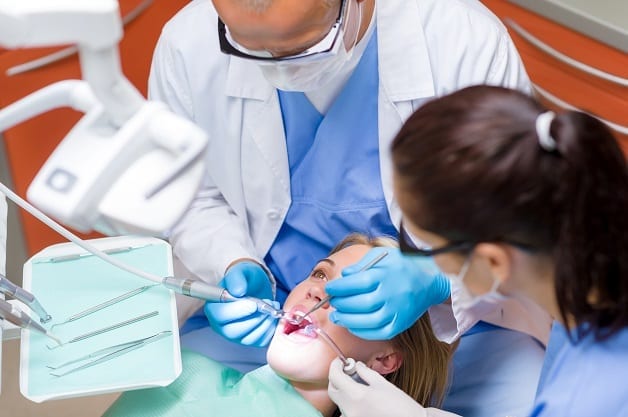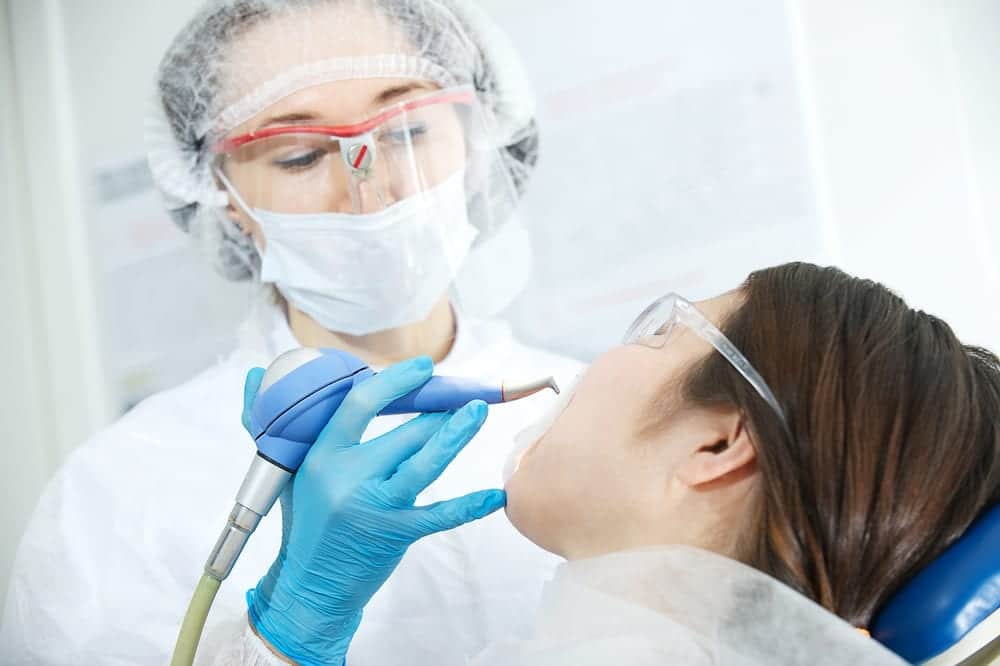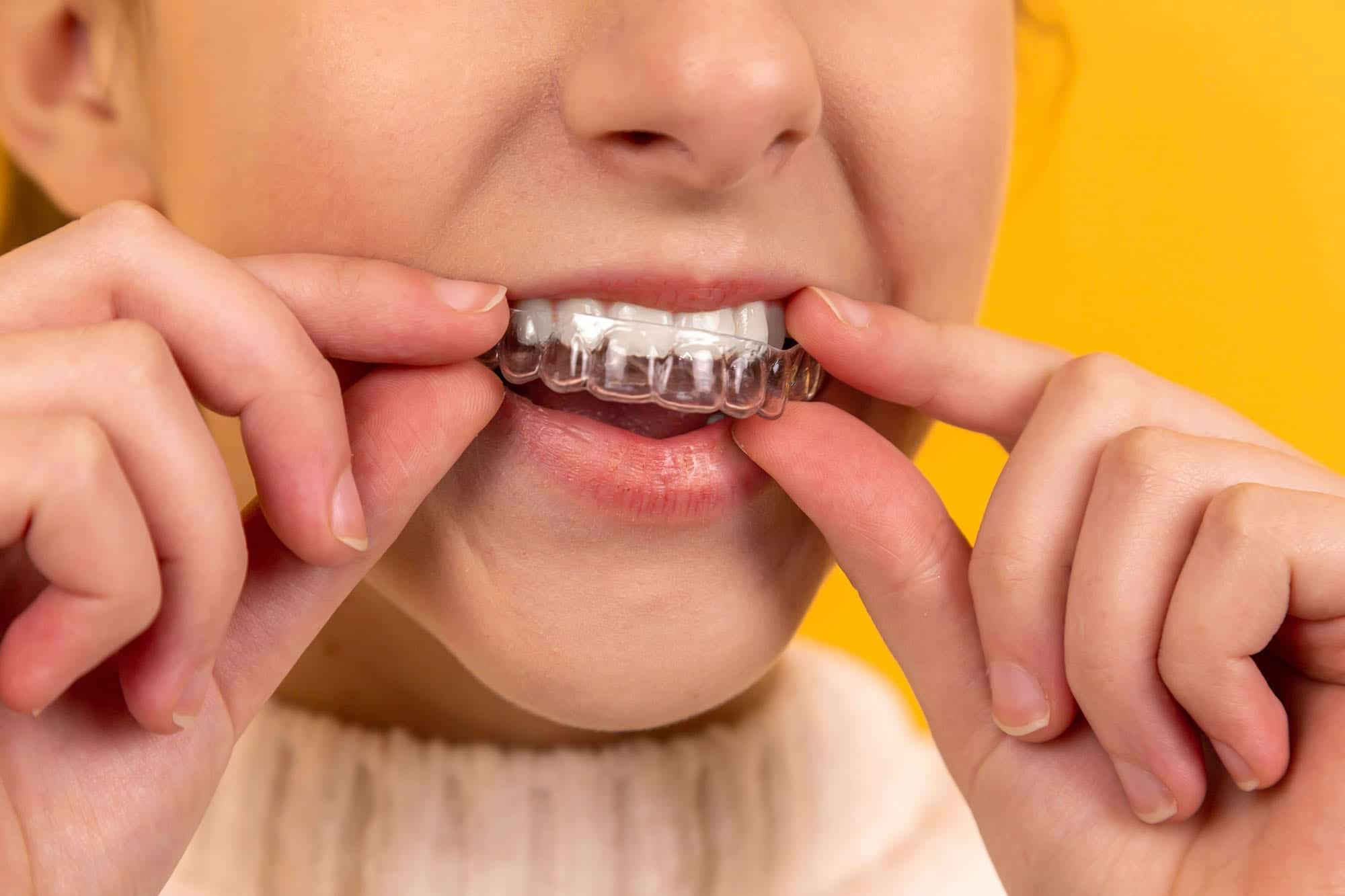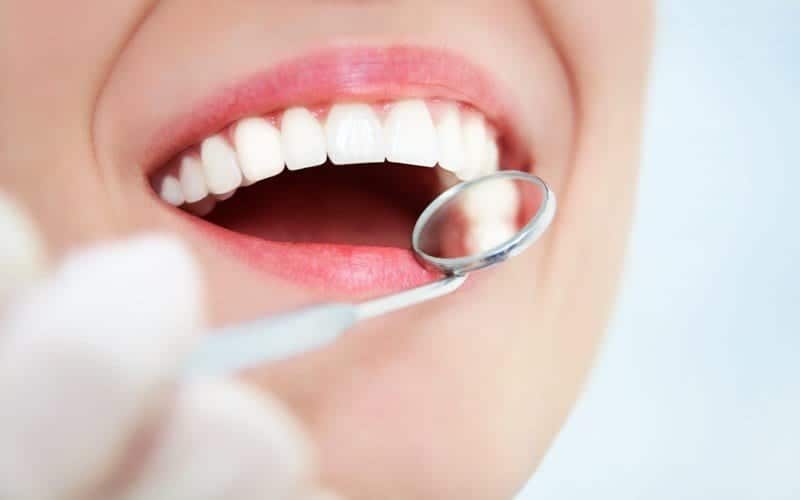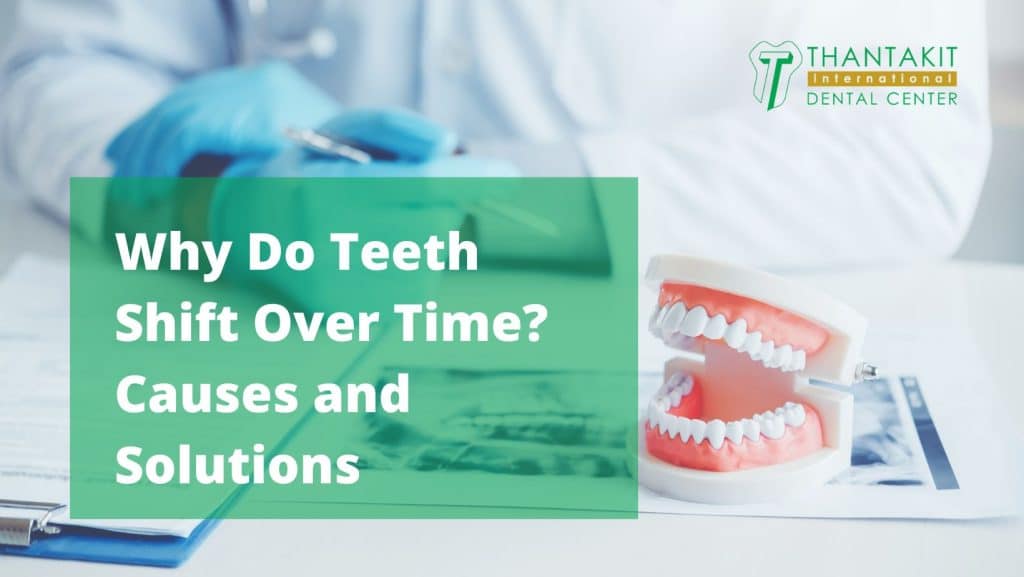Believe it or not, teeth actually do shift over time. Teeth shifting, also known as tooth shifting, is when the tooth or a set of teeth shift position in your jaw, which can cause crowding, wider tooth gaps, and so on. This shift is due to various factors, which include oral habits like clenching or grinding your teeth, tooth loss, aging, and jawbone or hormonal changes.
A lot of things can change in your mouth whenever a gap is created, such as a change in your bite, spacing between your teeth, and—in worst cases—even loss of your teeth. Some cases of teeth shifting require dental treatment or dentist oversight.
Page Contents
Teeth Aren’t Immovable Objects Set in Stone
Teeth positioning is supposed to shift over time as the child grows to adulthood and their jaw lengthens enough to let milk teeth fall and permanent teeth erupt.
However, this is also true of adults and their permanent teeth. Teeth positioning is more malleable during puberty, but it can also be influenced in adulthood. In reality, teeth can shift their position over time past childhood.
Many stimuli and conditions can cause your teeth to move toward each other and crowd together or shift away from each other and create wider gaps between themselves.
This movement can cause alignment problems for you over time and give your smile some unsightly gaps, thus requiring corrective measures like orthodontics.
Why Do Teeth Reposition Themselves in The First Place?
Here’s the deal. The tooth is attached to its socket by the gomphosis, which is a fibrous joint. Meanwhile, the periodontal ligament connects the socket to the outer layer of the tooth’s roots.
This very ligament securely holds the tooth. However, it can also move and stretch under the right conditions or stimuli.
This shift in teeth position is due to several factors, which include the following:
-
Aging, which influences the change in shape of your jaw.
-
The pressure or stimuli you get from talking to eating and even childhood habits like thumb-sucking.
-
Your teeth tend to shift back to their original positions after undergoing orthodontics (braces or aligners) if you don’t wear retainers to retain their shape.
-
Health issues such as teeth grinding and gum disease or complications from vices like smoking and drinking.
Regardless of the reason for the shift—from aging to hormones—once there’s space for the teeth to move on the jaw, they will move.
This can lead to complications like throwing your bite out of alignment (malocclusion), among other issues. Indeed, you should learn the basic causes, effects, and treatments associated with shifting teeth.
You can also use preventative measures to either preserve teeth placement or improve them depending on what you wish to happen. All the same, here are some key points to help guide your way to a better smile.
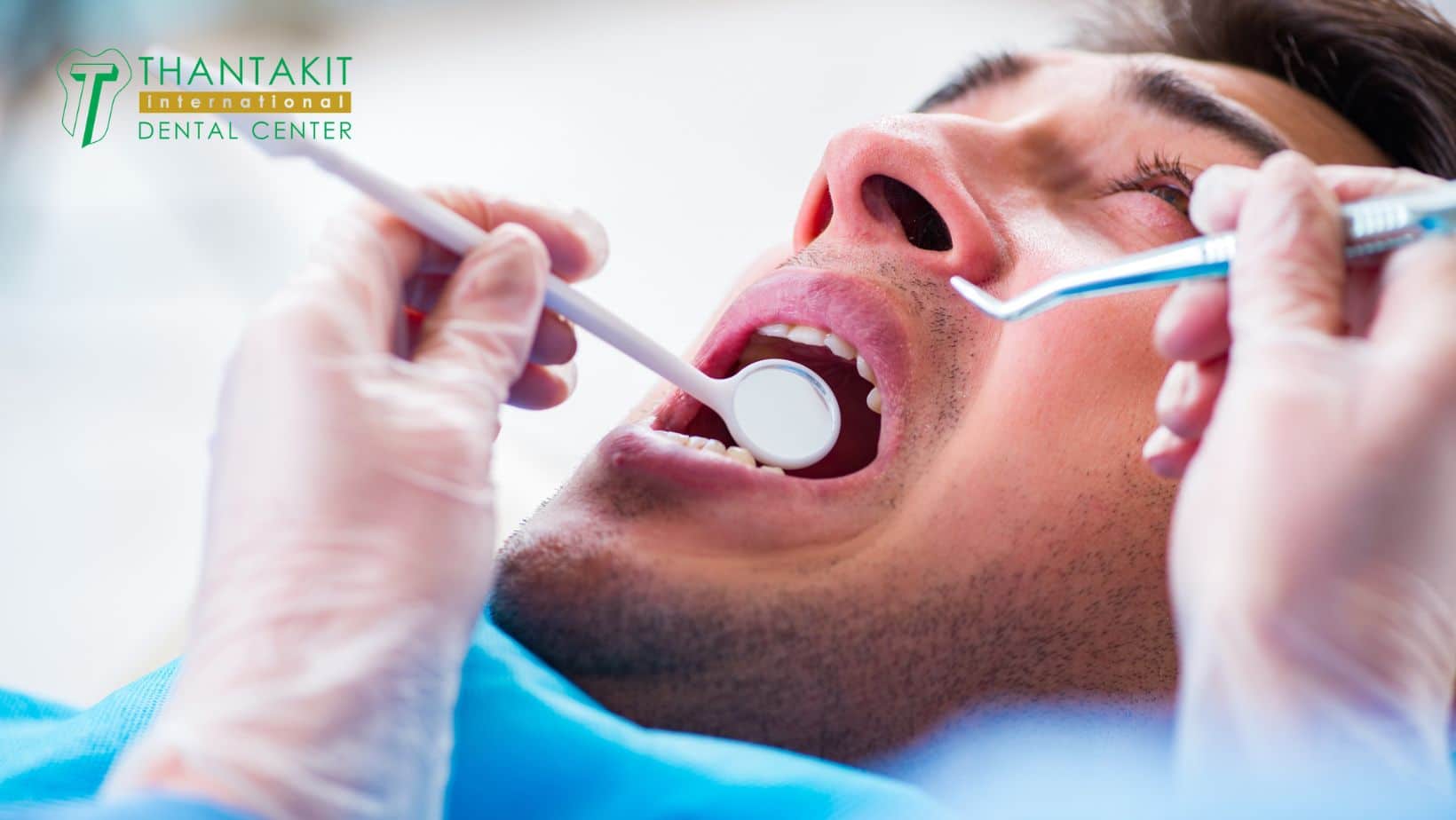
A Closer Look at the Potential Causes of Teeth Shifting
Let’s now discuss the specific causes of tooth shifting and what to expect from them. A host of factors can change how your teeth are positioned, including multiple factors working at the same time.
-
Aging: Your jawbone might change as you grow older, leading to a shift in teeth position due to the natural movement of the surrounding structures supporting them, which includes your jaw.
The role age plays in the shifting of teeth is a major one. As people like you and me age, they’re known to have their teeth moving slightly forward in their mouth.
The aging process usually compels your front teeth to crowd together, thus making it difficult to floss between them. These teeth might also become crooked as they end up pressing against each other for good measure.
-
Jawbone Changes: Speaking of jawbone changes, there are other ways to alter your jawbone over time aside from aging. You could suffer from osteoporosis or an accident involving blunt-force trauma and so forth.
This naturally causes teeth shifting as well because it’s a direct structural change that directly affects the structural foundations of your teeth.
-
Gum Disease: Gum disease can cause inflammation and damage to the tissues that support teeth, leading to teeth loosening and shifting when all is said and done, so observe regular oral hygiene to avoid this.
-
Tooth Loss or Extraction: Have you ever lost teeth? Tooth loss can lead to structural changes in the jaw (again) that cause teeth shifting to compensate for free space.
When you have a missing tooth, the surrounding teeth can move into the gap to fill it out. Or they can even crowd together, leading to some form or another of misalignment that requires correction.
The loss of a tooth is the perfect opportunity for teeth to shift due to the extra legroom (or perhaps “root-room”) because there aren’t adjacent teeth holding them into their default position.
-
Conditions and Vices: Certain vices can cause teeth shifting, such as smoking, or consuming copious amounts of alcohol. Meanwhile, acid reflux causing acid erosion can lead to shifting teeth due to layer-by-layer enamel removal.
-
Teeth Grinding (Bruxism): Some people tend to grind their teeth at nighttime while they sleep, sometimes enough to wear away the outer enamel layer and expose the middle dentin layer.
The significant pressure exerted on the teeth and jaw by all the constant clenching and grinding can definitely cause shifting as well. They need to wear mouthguards before sleeping to curb such tendencies.
-
Certain Oral Habits: If you have some bad oral habits like improperly using certain tools like the toothbrush or thumb-sucking by children can cause the affected teeth to shift (like front teeth protrusions care of the thumb’s exertions).
-
Genetics: Some people are simply genetically inclined to have their teeth shift because genetics influence teeth and jaw size and their likelihood of shifting positions over time.
With that in mind, did you know that the whole branch of dentistry known as orthodontics is all about gradually repositioning the teeth and jaw? It really takes advantage of the malleability of dental support structures.
-
Orthodontic Relapse: This is when after getting braces and realigning your teeth, the same teeth might continue to shift and return to their original positions. This is why you wear retainers to retain their shape—to avoid relapse.
-
Hormonal Changes: Teeth shifting can also be influenced by hormonal changes. For example, if the patient is pregnant, hormone relaxation is produced more. This hormone is known to loosen or relax ligaments.
While ligament relaxation is needed for the bodily changes involved in a woman’s body to make way for the baby, this hormone can also affect the teeth’s periodontal ligaments. Gum blood flow is also affected by such hormone fluxes.
-
How You Lie Down While Sleeping: Even your position while sleeping can make you susceptible to shifting teeth. Those who lie on their stomach are likelier to experience a change in their teeth positioning compared to those who lie on their back or their side.
Why Teeth Shift After the Removal or Loss of a Tooth
Simply put, once a permanent or adult tooth is removed or lost, the other teeth suddenly have room to move (as opposed to someone with a complete set of teeth).
The teeth and their stretchable ligaments supporting fibrous gomphosis will naturally attempt to fill up the now-empty space. The results could range from harmless to disastrous overtime.
-
Losing Milk Teeth vs. Permanent Teeth: If it’s a permanent tooth, it’s particularly notable because there’s no new tooth to erupt and replace it (as opposed to the milk teeth of children who’d have them replaced soon after).
-
Wisdom Tooth Removal: Wisdom tooth removal, even though it’s a permanent type of tooth, might not cause major shifting problems because modern humans have “evolved” to not even need these “extraneous” teeth.
Quite a lot of patients get along fine after having their wisdom teeth or other rear molars removed. The tooth shifting in these cases, if any, is minimal.
-
The Loss of Canine or Incisor Teeth: There’s a greater risk of malocclusions, misalignment, aesthetically displeasing gaps, and teeth crowding when you lose an incisor or canine tooth.
In such instances, the teeth on either side may shift toward each other or in the new space left from extraction. The rule of thumb is that molar removal is okay and front teeth removal is not so good.
The best method of avoiding teeth shifting after losing teeth is to replace them with dental implants or a bridge that literally bridges the gap made by missing teeth.
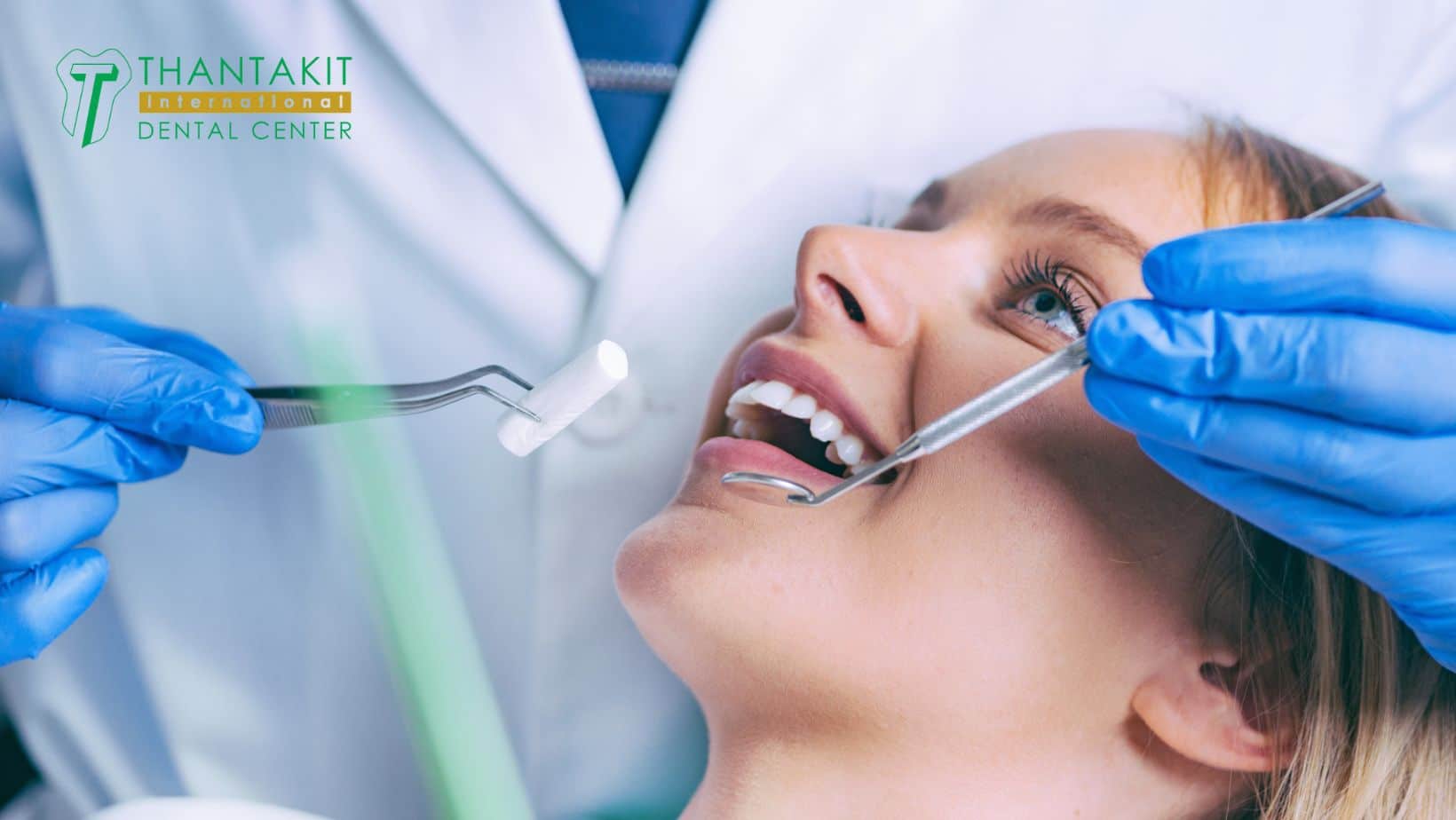
Why Teeth Shift Back or Relapse After Wearing Braces
If you’ve worn braces or undergone orthodontic procedures for correcting malocclusion or tooth/jaw alignment gone awry, this means your teeth have been moved from their natural positions.
Therefore, like a rubber band, their supporting periodontal ligaments and the fibrous joint gomphosis will snap back or “relapse” back to their original placement unless you use a retainer to “retain” their new shape.
This is a natural consequence. This is also the reason why retainers are needed after undergoing orthodontic procedures such as:
-
Metal braces
-
Ceramic braces
-
Lingual braces
-
Self-ligating braces
-
Clear aligners (Invisalign)
Once you remove your braces or stop wearing your aligners, your teeth will start to shift back to their original positions. This comes on a case-by-case basis. Some people have more pronounced movements compared to others with little movement.
Some tooth movement should also happen to those who’ve gotten lingual or fixed retainers after getting some orthodontics work.
According to the American Journal of Orthodontics and Dentofacial Orthopedics, most of the time the shifting occurs if one of the bonds of the retainer breaks or there’s improper retainer bondage.
Therefore, it’s important to avail yourself of the services of a quality internationally trained dentist with world-class results when getting orthodontics work done.
One other reason for shifting teeth after braces removal involves the health of your jawbone and gums. If gum disease has caused your jaw to suffer from bone loss, then it becomes harder for your teeth to stay anchored in one place.
Braces can only do so much. The rest is up to how healthy your gums, periodontal ligaments, and supporting dental structures are.
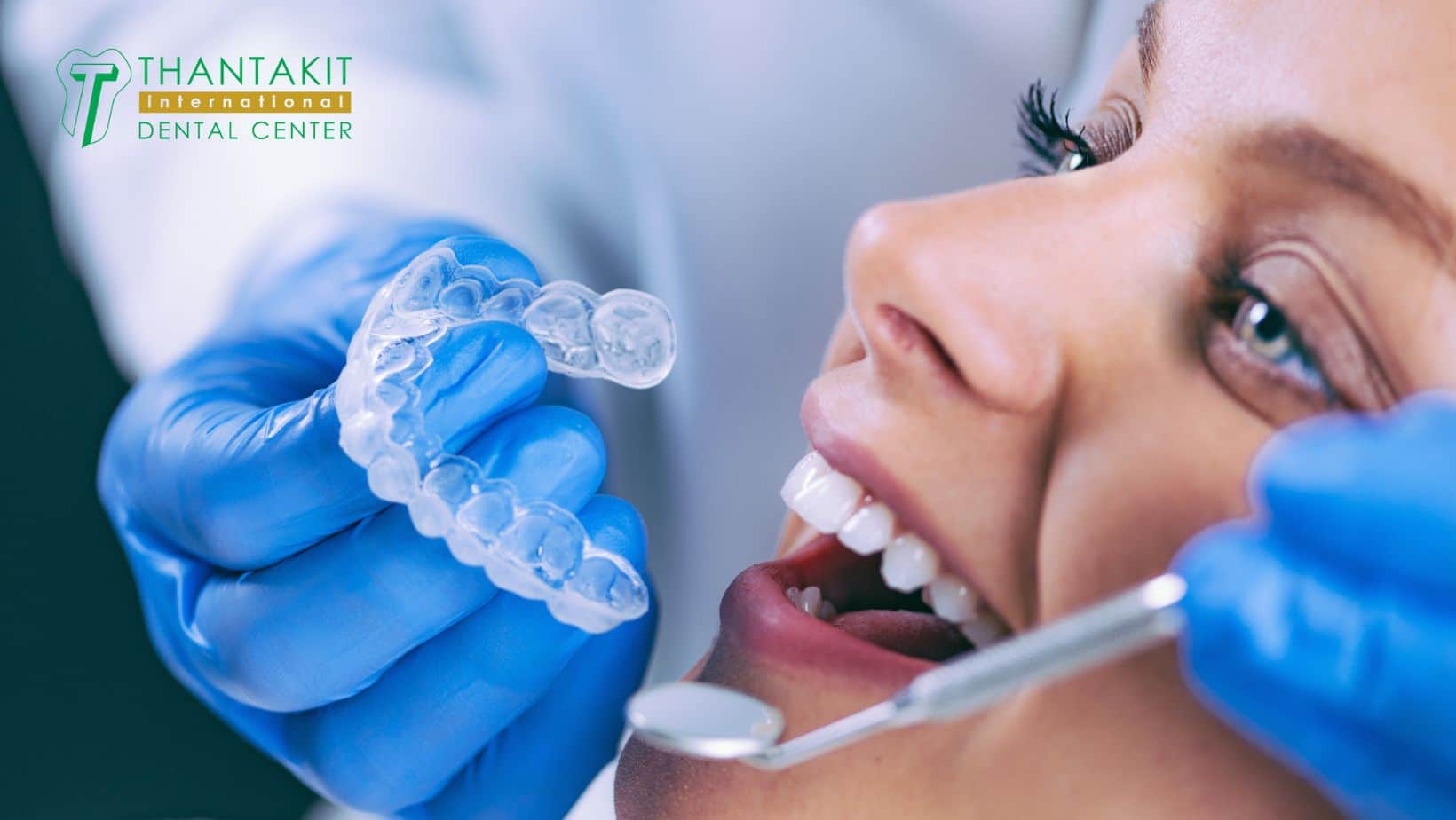
What Are Some of the Solutions for Teeth Shifting?
When it comes to resolving tooth shifting, it depends on the cause. Consult your dentist for further investigation. The most common reason is bite alignment correction with braces, followed by how well your retainer holds up your new bite.
The forces exerted upon your teeth are gentle and gradual, but with braces the changes could be quite drastic, leading to a relapse if the retainer doesn’t work properly.
Some of the solutions for tooth shifting include orthodontic treatment, dental implants, bridges, retainers, and even dentures to keep the gap from a missing tooth or teeth from influencing the spacing of the other teeth.
-
Orthodontic Treatment: This solution uses appliances like braces and aligners to shift teeth into ideal, aesthetically pleasing, and fully functional positions, particularly when it comes to correcting malocclusions or bite misalignments.
-
Dental Implants: Instead of allowing missing teeth to influence shifting over time, it’s better to prevent it by investing in dental implants. The presence of the implant and its crown will keep the surrounding teeth from moving.
-
Bridges and Crowns: Bridges and crowns are artificial teeth dentists put atop the dental implant to fill in the gaps left by missing teeth. Bridges are longer links of crowns to fill in multiple gaps while a crown tops off a single implant.
-
Retainers: To prevent orthodontic relapse from happening (which can be as frustrating as an addiction relapse), people who’ve worn braces should also wear retainers to help maintain the new tooth alignment they’ve achieved.
-
Mouthguards: Mouthguards, also known as nightguards, must be worn by patients with bruxism to prevent both grinding and the resulting teeth shifting. The custom-fit guard softens the clenching while holding the teeth in position.
-
Stress Relief: On top of investing in a plastic mouthguard or mouthpiece that fits your teeth precisely, bruxism patients can also receive advice on stress relief and other strategies to ease their tendencies that lead to nightly teeth grinding
-
Lifestyle Changes: You can control or prevent teeth shifting, crowding, or gap-widening by making important lifestyle changes. Drink alcohol moderately, for example. Or avoid smoking at all. If you’re already a smoker, quit smoking.
-
Sleeping with Support: Use a pillow for support when sleeping on your side or your back instead of sleeping on your stomach as well. Sleeping pronated (stomach-wise) instead of supine (back-wise) can lead to teeth shifting.
-
Dealing with Complications: Teeth shifting is one of many complications of certain diseases. Treat the underlying disease to alleviate the symptoms and complications. For example, ask your doctor for treatment options for acid reflux.
There is a myriad of ways to improve or preserve the alignment of your teeth for the better. Now that you know why teeth tend to shift, you’re now armed with knowledge on how to mitigate their movement.
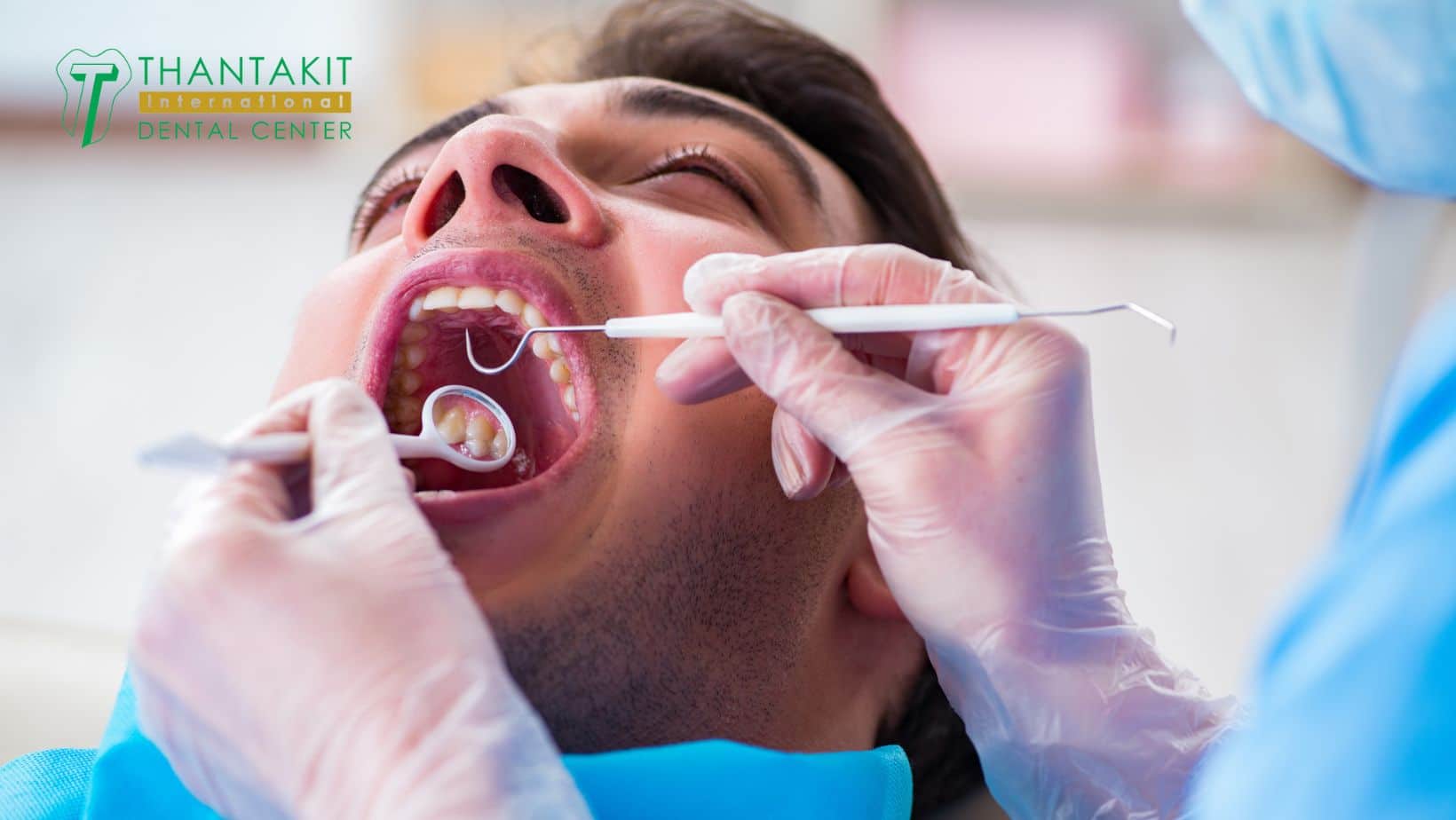
Regular Dental Visits are Required Even to Dental Tourism
Regular check-ups can help monitor tooth movement and allow early intervention if needed. This is also true when it comes to Bangkok-based dental tourism.
While you might not think it’s a necessity when it comes to dental tourism, thinking that a wellness vacation for dentistry is reserved for affordable dental implants, then think again! Shifting teeth should also be monitored while you’re there in Bangkok.
The same dentist should also monitor any major operation by your Thailand dentist, including implant dentistry and orthodontics, for best results, including the ones available at the Thantakit Dental Center.
Thantakit International Dental Center is Thailand’s longest established dental center. Situated in Bangkok, our clinic is renowned across the world as a destination for world-class dentistry, with most of our patients flying to us from Australia.
Reach out to our friendly team today and get FREE dental consultation!



